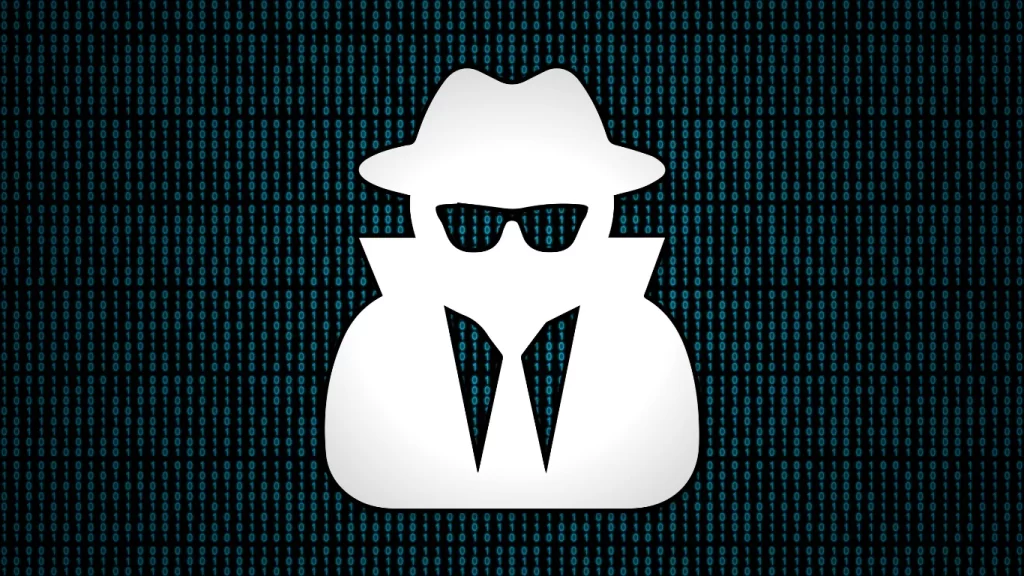The question of “Do Macs need antivirus?” has long lingered in the minds of Apple users, fueled by common misconceptions regarding Mac’s immunity to traditional viruses. While it’s true that Macs face a lower risk of contracting certain types of malware, especially when compared to PCs, the rise in potentially unwelcome programs (PUPs) affecting about 20% of Macs signals a growing vulnerability. This underscored the fact that Macs are not impervious to security threats, particularly when it comes to more sophisticated forms of malware like adware.
Understanding why Macs need antivirus is critical as we navigate the current digital landscape. The belief that MacBooks do not require antivirus protection in 2024 might be a risky oversight, considering the evolving nature of online threats. Implementing additional layers of security, such as clearing browser caches regularly and utilizing VPNs on public Wi-Fi networks, can significantly reduce these risks. This article aims to dissect the enduring myth of Mac’s invulnerability and offers guidance on choosing the right antivirus to reinforce Mac’s built-in security features.
Debunking the Myth: Macs Are Invulnerable to Viruses
While Apple’s macOS is renowned for its robust security measures, including Gatekeeper and XProtect, the landscape of cybersecurity is constantly evolving. In 2023 alone, researchers discovered 21 new malware families specifically targeting Macs. This revelation, coupled with Apple software boss Craig Federighi’s admission of Mac malware affecting over 300,000 devices, underscores the vulnerability of Macs to cyber threats.
- Types of Malware Affecting Macs:
- Adware: Often manifests as unwanted ads on your desktop or browser.
- Trojans: Malicious software disguised as legitimate programs.
- Computer Viruses: Self-replicating code that damages system files.
- Spyware: Software that secretly monitors user activity.
Despite Macs’ industry-leading device security, they are not immune to these threats. Examples of malware targeting macOS include UpdateAgent, XMRig, and Lazarus, highlighting the need for vigilance. Additionally, a significant increase in Mac-targeted malicious programs, with a 1,000% rise in 2021, further challenges the notion of Macs being invulnerable.
Moreover, a Mac Security Survey in 2023 by Moonlock revealed a concerning trend: 57% of Mac users believe malware does not exist on macOS, and many neglect basic security practices like regular software updates. This complacency, combined with the increasing sophistication of cyber threats, underscores the critical need for additional antivirus protection on Macs.

Understanding Mac’s Built-in Security Features
Apple’s macOS is fortified with an array of built-in security features designed to offer comprehensive protection against a myriad of cyber threats. These features are meticulously engineered to work in harmony, ensuring that Macs remain safeguarded against potential vulnerabilities:
- Built-in Antivirus Software: At the core of macOS security are XProtect and Gatekeeper. XProtect meticulously scans applications and files for viruses and malware, leveraging YARA signatures to identify malicious content. Gatekeeper enhances this protection by checking all internet-downloaded apps for known malicious code, only allowing trusted software to run.
- Advanced Encryption and Access Control: macOS employs several layers of encryption and access control mechanisms. FileVault 2 encrypts the entire drive with XTS-AES 128 encryption, making data inaccessible to unauthorized users. Additionally, System Integrity Protection (SIP) and Firmware passwords protect against unauthorized changes to the system, while Apple ID 2FA (two-factor authentication) adds an extra layer of security for user accounts.
- Comprehensive System Security: Beyond these, macOS integrates several other security features such as Sandboxing, which isolates apps, preventing them from affecting each other or the system, and Automatic software updates that ensure the operating system is always equipped with the latest security patches. The Apple M1 chip and Secure Enclave provide advanced security features akin to those protecting iPhones, further solidifying Macs’ defence against cyber threats.
Why Your Mac Needs Additional Antivirus Protection
To keep your Mac safe from the ever-evolving threats in the digital landscape, it’s essential to adopt a multi-layered approach to security. Here are some practical steps and considerations:
1. Update Regularly:
- Software and Operating Systems: Ensure all software, especially the macOS, is up-to-date to protect against vulnerabilities exploited by malware.
- Java and Browser Updates: Keep Java and your preferred web browsers updated to mitigate the risk of security loopholes.
2. Exercise Caution:
- Suspicious Links and Emails: Avoid clicking on links or downloading attachments from unknown sources. Phishing emails are a common strategy used by cybercriminals.
- Public Wi-Fi Networks: Use a VPN when connecting to public Wi-Fi to secure your online activity from potential snoops.
3. Choose the Right Antivirus:
- Reputable Brand and Apple Notarization: Opt for antivirus software from a reputable brand that’s been notarized by Apple for macOS.
- Real-Time Protection and Regular Updates: Ensure the antivirus offers real-time protection and receives regular updates to combat new threats.
Despite Macs’ robust built-in security features, the sophistication and frequency of cyberattacks necessitate additional antivirus protection. Dedicated antivirus solutions, such as Bitdefender, offer comprehensive protection with a high virus detection rate, safeguarding your Mac from malware, phishing attacks, and other cyber threats. Remember, the key to ensuring your Mac’s security lies in combining Apple’s built-in defences with proactive measures and reputable third-party antivirus software.
Top Threats to Macs in the Current Digital Landscape
In the current digital landscape, Mac users face a plethora of threats that underscore the necessity of robust antivirus protection. The evolution of malware targeting Macs is both diverse and sophisticated, with several notable threats emerging:
- Geacon and MacStealer: These malicious tools demonstrate the advanced capabilities of hackers in executing data theft, remote control, and privilege escalation. Geacon, leveraging the Cobalt Strike tool, and MacStealer specifically target Apple users, compromising device security through various methods including email attachments.
- Ransomware and Vendor Exploitation: The surge in ransomware attacks and the strategic targeting of third-party software vulnerabilities indicate a shift towards more organized cybercriminal activities. These attacks not only aim to encrypt and hold sensitive data for ransom but also exploit trusted relationships between organizations and their vendors.
- Adware and Potentially Unwanted Applications (PUAs): With adware like OSX.Genio is leading detections on macOS, and the intrusion into users’ browsing experiences for profit is evident. This, coupled with a significant percentage of Macs infected with PUAs, highlights the ongoing challenge of maintaining device integrity against seemingly benign but ultimately harmful software.
These threats, ranging from the deceptive simplicity of adware to the complex operations of state-sponsored hacking groups, illustrate the critical need for comprehensive antivirus solutions tailored to the unique vulnerabilities of macOS.

Choosing the Right Antivirus for Your Mac
Protecting your Mac from the myriad of cyber threats requires a comprehensive approach, encompassing not just the installation of antivirus software but also adherence to robust cybersecurity practices. Here are key considerations when selecting antivirus software for your Mac:
- Compatibility and Features:
- Make sure the antivirus software is compatible with your macOS version.
- Look for essential features like real-time protection, automatic updates, and scanning capabilities.
- Performance and User Feedback:
- Assess the software’s impact on system performance to ensure it does not hinder your Mac’s efficiency.
- Read user reviews and professional ratings to evaluate the software’s effectiveness in real-world scenarios.
- Pricing and Additional Features:
- Examine pricing details and licensing options, considering whether you need protection for a single device or multiple devices, including family plans.
- Additional features such as a firewall, ransomware protection, and VPN services can offer enhanced security.
Popular choices among Mac users include Intego, Norton, Bitdefender, Kaspersky, and McAfee, each offering a unique set of features tailored to different security needs. For instance, F-Secure Total for Mac praised for its comprehensive security suite, scored 99.8% in AV Test’s September 2023 evaluation despite lacking quick or scheduled scan options. When choosing, prioritize antivirus solutions that combine high threat protection rates with user-friendly interfaces and minimal impact on system performance, ensuring your Mac remains secure and efficient.
Maintaining Your Mac’s Security
Maintaining your Mac’s security is an ongoing process that requires diligence and awareness of potential threats. Here are essential steps to ensure your Mac remains protected:
- Password and Access Management:
- Use secure passwords and enable Touch ID where available.
- Create passkeys for account sign-ins and disable automatic login.
- Limit administrative users; use a standard account for daily activities.
- Set your Mac to log out after a period of inactivity to prevent unauthorized access.
- Software and Privacy Settings:
- Regularly update macOS and applications to patch security vulnerabilities.
- Enable the firewall in System Preferences to block unauthorized network traffic.
- Adjust privacy settings to limit app access to personal data and location.
- Use a privacy-focused browser and a password manager for enhanced security.
- Backup and Antivirus Measures:
- Utilize Time Machine or cloud services for regular backups.
- Install reputable antivirus software, keeping it updated for real-time protection.
- Consider Lockdown Mode for high-risk security threats and disable remote access when not in use.

FAQs
Does Apple suggest using antivirus software on Mac computers?
Apple does not recommend the use of antivirus applications on Macs. The macOS already includes built-in protection measures, and antivirus apps can sometimes interfere with these, causing issues with the system’s performance.
Can I safely operate my Mac without installing antivirus software?
While a large portion of malware targets Windows systems, leading to the belief that Macs are immune, this is a misconception. Macs are still susceptible to malware, just not to the same extent as Windows due to the sheer volume of Windows-targeted threats.
Should Mac users be concerned about virus infections?
Yes, Mac users should be mindful of potential virus infections. Although macOS has mechanisms to prevent the spread of malware, Mac users can encounter various online dangers such as spam, phishing emails, browser exploits, and identity theft.
How effective are Macs in protecting against viruses?
Macs do have strong built-in virus defences, but they are not impervious to all threats. While they can combat viruses to some extent, they might not provide comprehensive protection against all types of malware, especially new threats and those targeting online identities.
Do Macs Need Antivirus? Summing Up
As we’ve explored throughout this article, the myth that Macs are immune to viruses and cyber threats is far from reality. Despite the advanced security features built into macOS, the escalating sophistication and variety of cyber threats present a clear message: additional antivirus protection is not just advisable; it’s essential. This necessity is underscored by the growing instances of malware tailored to exploit Mac’s defences and the alarming complacency among Mac users regarding these risks. By highlighting the types of vulnerabilities and offering practical steps for reinforcing Mac’s security, we aim to foster a more informed and vigilant user base.
Understanding that Macs do indeed require vigilant protection against the evolving landscape of cyber threats is the first step towards ensuring the lastingness and integrity of your device. It becomes clear that layering Apple’s robust built-in security features with recognized antivirus software creates a formidable defence against potential cyber incursions. By choosing the right antivirus solution and adhering to recommended security practices, Mac users can significantly mitigate the risk of malware infections. This proactive approach to cybersecurity not only protects individual devices but also contributes to the broader effort of maintaining a safe and secure digital environment for all.





